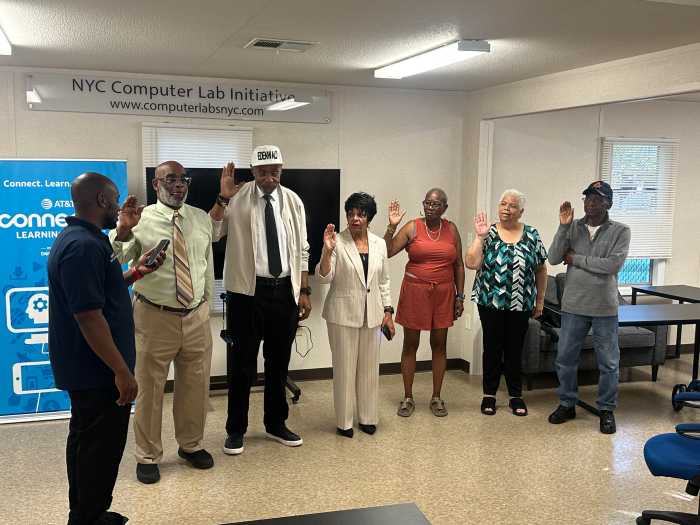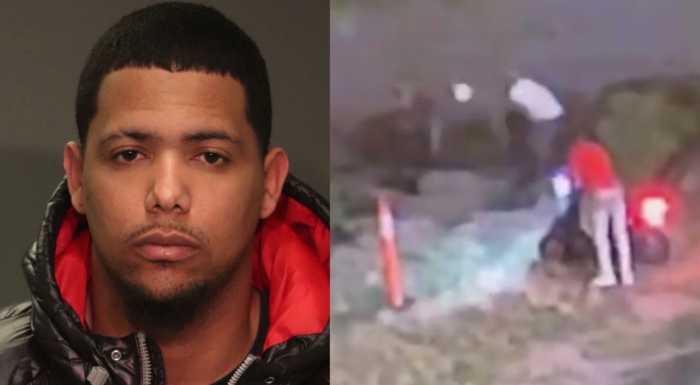BY NATHAN RILEY | New York City is still arresting black and brown youth for marijuana and leaving white youth alone. The change of mayors and a new police commissioner, William Bratton, have yielded more of the same.
The number of arrests in the first three months of this year is basically the same as in the first three months of 2013 and the racial skew is unchanged. The Marijuana Arrest Project compared statistics sent to the New York State Division of Criminal Justice Services to track marijuana enforcement under the old administration and the new.
The overall picture is essentially unchanged. Nearly 50 percent of those arrested were black, nearly 40 percent were Latino, and only nine percent were white. This was true under Mayor Michael Bloomberg and remains true under Mayor Bill de Blasio. Arrests are, for the most part, made in communities of color.
One person was arrested in downtown Manhattan and 285 in Washington Heights; one on the Upper East Side, but 176 in East Harlem. In Brooklyn, seven were booked in Park Slope but 438 were in East New York during the first three months of 2014. Residents of predominantly white neighborhoods don’t attract police attention.
“Marijuana arrests in 2014 continued the pattern of unequal, unfair policing and arrest policies in the ‘two New Yorks’ that Mayor de Blasio called attention to in his campaign,” the Project warned in its press release.
Comparing the first quarter this year to the first quarter of last year, arrests were down 8.5 percent — 7,671 in 2013 versus 7,017 this year.
There is wide support for reform. Elected officials rallied behind a policy change made by Brooklyn’s new district attorney, Ken Thompson, who defeated longtime incumbent Joe Hynes last year. Thompson sent a memorandum to the NYPD outlining a new policy for handling marijuana arrests in his office. Persons with no or a minimal criminal record would have the charges dropped. End of story, there would be no more trips to court or missed days of work and no criminal record.
A legal exercise of the district attorney’s discretion, the memorandum was leaked to the New York Post, which concluded it “seems to care more about the defendant and their day than about the crime.” The DA wouldn’t provide the memorandum, but the New York Times quoted from it extensively, allowing greater insight into its contents.
To be sure, Brooklyn’s Thompson has pushed the envelope; no other DA has gone this far.
Other minor offenses, like turnstile jumping, would also receive innovative treatment. The offenders would be required to attend classes to discuss topics like making good choices. Studies have shown that defendants want an opportunity to explain their actions, but that criminal defense lawyers can’t permit that in court without increasing the accused’s risk of conviction. Using alternatives to incarceration solves this problem, giving youth an opportunity to be heard — but also to learn.
De Blasio is making a serious effort to fulfill his promise of a progressive administration. He has reached settlements with labor unions that give city residents wage increases; his budget raises funding for homeless youth shelter, rental assistance to people living with AIDS, libraries, public housing, and student aid at City University. He appointed a noted progressive, Steven Banks, to head the Human Resources Administration, which provides assistance to the poor. The mayor is increasing staffing at Children’s Services, which intervenes in cases of child abuse. Traffic and pedestrian safety is clearly an important priority.
But conservatives are attacking de Blasio for being soft on crime at housing projects. Two police precincts, the 47th in the Bronx and the 73rd in Brooklyn have seen jumps in shootings and homicides. Members of the City Council are calling for 1,000 new police officers to protect their neighborhoods.
The Brooklyn Bureau web project at City Limits magazine pointed out that “by many metrics, Brownsville’s public safety is on par with or better than prior years. According to the 73rd precinct’s CompStat for the week of March 2, the last week for which data is publicly available, there had been an 80 percent decline in rapes compared to this point last year; the precinct also logged decreases in robberies (2.6 percent), burglaries (7.7 percent), and grand larceny (5.5 percent). But the picture was not entirely rosy. There has been an uptick in the number of assaults; nearly a third more shootings that claimed a victim were recorded this year.”
Conservatives don’t mention “upticks” — they are proclaiming a new crime wave and blaming it on the mayor and his allies.
“The lawmakers complaining about crime in their neighborhoods,” fumed the Post columnist Michael Goodwin, “included many who had demonized the most successful police force in America, demanded an end to stop-and-frisk despite record low crime, and passed a law allowing people to sue individual cops if they believed they were stopped improperly.” The police, he argued, had been “handcuffed” and City Council members would let the cops become “targets” who would “stand around and wait to get shot.”
The lawmakers Goodwin characterized as foolish, even dangerous are from the “Black, Latino, and Asian Caucus,” who issued the call for more police. This group makes up just over half of the City Council. They and the mayor should expect four years of rabid criticism aimed at splintering the multi-racial coalition that dominated last year’s elections.
Bratton is the mayor’s personal choice and he will back up his department to the end. De Blasio’s detractors will not shy from playing the race card, and he is unlikely to find sympathy among the police, who resent the criticism leveled at its enforcement record. The mayor will have to tell his own story and that will require public relations staffing with strong activist backgrounds — especially in the Mayor’s Office of Criminal Justice and for the new post of police inspector general. Smart voices from true believers will be needed to withstand right-wing hysteria warning of a return to the bad old days.





























